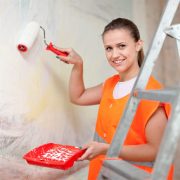Why Location Is Crucial When Buying An Investment Property
The first thing most of us look at when selecting an investment property is its location. If the property itself isn’t quite right, you can always renovate, but it’s not as easy to move a house to a better location. That’s why you should consider the location carefully. Here are some of the most important things to look for.
Love thy neighbour
Before you buy, familiarise yourself with the local community. If possible, visit the neighbourhood during both day and night to get a feel for whether it’s a safe place to live. Are there kids playing outside or security bars on the windows? Are there trampolines in the front yards or the remnants of last night’s party? This will help you determine whether the location is suitable for the type of tenants you want. After all, if you’re looking in an area that attracts university students but you would prefer to rent to a quiet couple, then perhaps this location isn’t right for you.
Future plans
The neighbourhood might look suitable now, but things can change. It’s a good idea to investigate any future plans that could affect the value of your property. For example, the local council should be able to tell you if a freeway or large-scale construction is planned. Major works could increase or decrease your property’s value depending on where they’re situated.
Access to infrastructure
To increase your potential rental income, try to buy near desirable infrastructure and facilities. For example, families often pay a premium to live in the catchment area of a quality public school, so it’s worth checking the educational zoning.
Access to shops, public transport and the beach are also attractive features for both tenants and prospective future buyers. And while it’s handy to be near the airport, if you’re located right under the flight path it might impact the amount of rental income you receive.
Bargain pockets
Finding a bargain pocket in a good suburb could increase your capital growth potential. By looking at demographic data, such as that collected during the Census, you may be able to spot trends. Perhaps the neighbourhood has recently been gentrified by young professional couples who are increasing the average income of the area, which is likely to increase the value of the property over time. Bargain pockets may also be found in close proximity to high-growth areas that will benefit your investment in the long term.
Searching for an investment property can be a rewarding experience. By considering the location, not just the address, you can increase your chance of maximising your rental and capital growth potential. If you need help buying your investment property, contact your mortgage broker.
Source: Your Loan Hub






